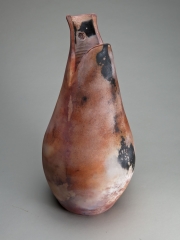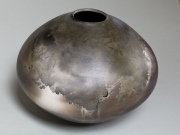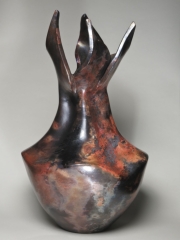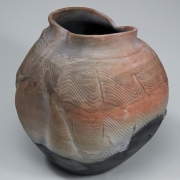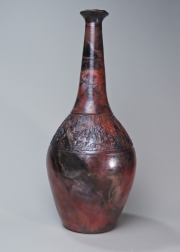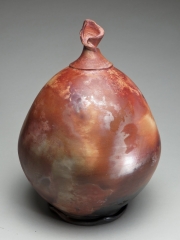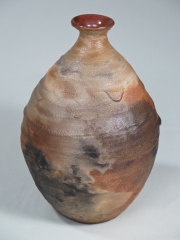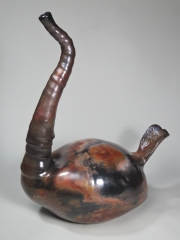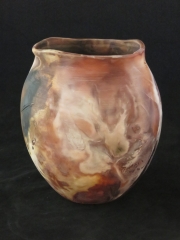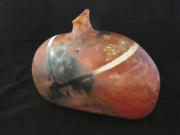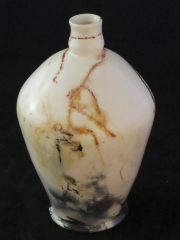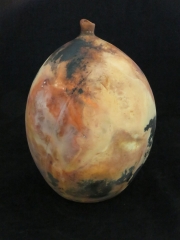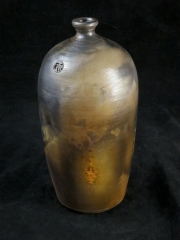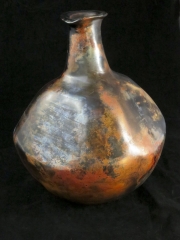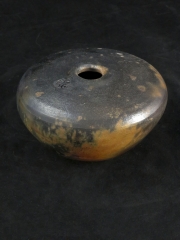Samples of Pit-Fire Pieces
Some of these pit-fired pieces are still available I have included them here to show the type of work that I am doing. If you hover the cursor over the thumbnail, the image name will display.
If you contact me with the name, I can tell you if the piece is still available or if I have something similar.
Pit-Fired
All ancient native American ceramic ware was pit fired. It has recently become a popular alternative fire technique. The ware is literally painted by the fire. Modern chemicals and techniques have brought a whole new dimension to this art.
Pit firing is done in a pit in the ground or a constructed above the ground “pit”. The pieces to be pit fired sit in a bed of sawdust and wood. Chemicals and organic material may be added to the pit. A fire is started on top and then the flames are smothered. The fire will continue to smolder.
The placement and stacking of the ware in the pit have a profound effect on the resulting surface effects.
Typically a pit-fire will take about 18 hours. This is similar to how the native Americans fired their pottery. Pit-fired pieces will have a patina that can varied and sometimes have a metallic sheen. Greenware (clay that has not been bisque fired) when pit fired turns black. These pieces are decorative and not used for food or water.
Care And Use
Pit-fired pieces are strictly decorative and not intended for food or liquid use.
Pit-fired ware is not fired to vitrification – where clay turns into a glass-like substance. Because of this, it is more fragile than regular pottery and the clay remains porous (water will seep through it). The glazes and chemicals used to decorate the piece may be prone to leach and this means these pieces are not intended to hold food.
Pit fire ware should not be left for extended periods of time in direct sunlight – this may cause the colors to fade. To protect the pieces from oxidation I apply a clear acrylic coat or a wax coat.
All of the above applies to saggar and pit-fired pieces.
